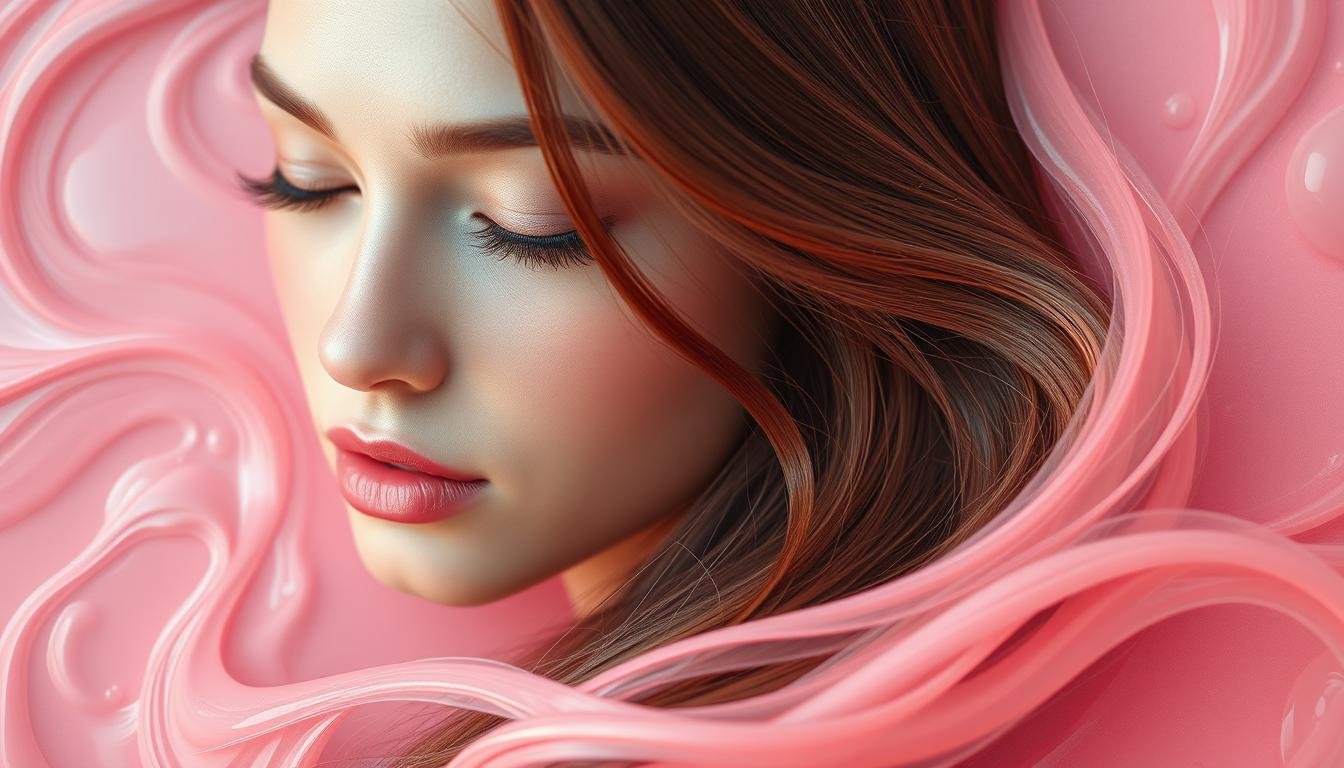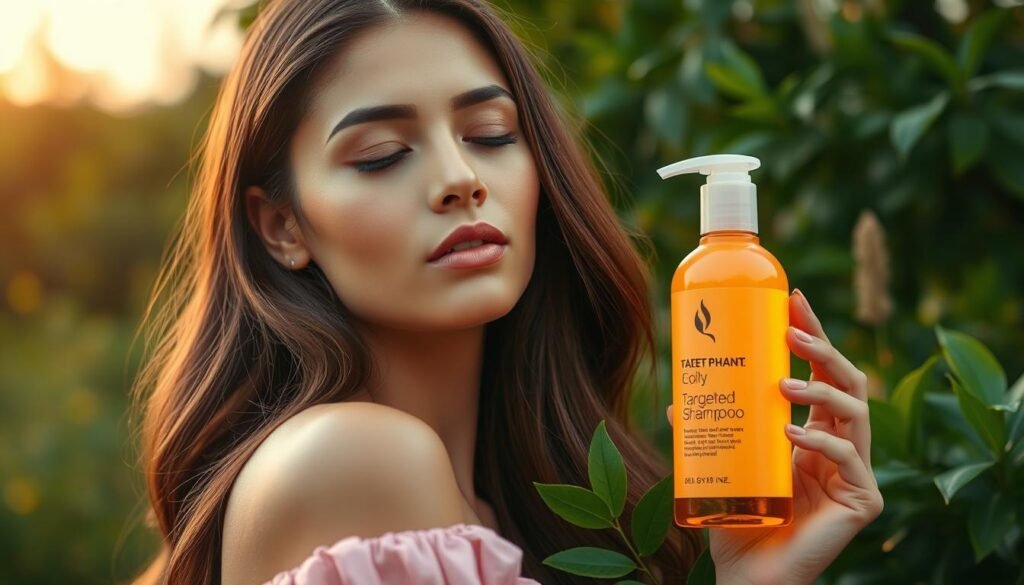How to Manage Natural Oils to Protect Oily Hair
Discover expert tips for controlling oils to protect oily hair, ensuring a balanced, healthy scalp and radiant locks without the greasiness.

Managing natural oils is key for healthy hair, especially for those with greasy hair. Almost 25% of women deal with oily hair often. This greasiness comes from genes, hormones, and bad hair care.
The scalp’s sebaceous glands make too much sebum. This makes hair look oily.
Knowing these reasons helps you control your hair’s health. You can clean your hair right for oily hair, balance conditioning, and use natural fixes like tea tree oil and apple cider vinegar. Are you ready to change how you care for oily hair?
Regulate Sebum Production to Reduce Greasiness
Managing sebum is key for oily scalp issues. This oil protects and moisturizes your hair and skin. But too much can cause greasiness and build-up. Using scalp balancers like tea tree oil or witch hazel can help.
These ingredients target problems and keep oil levels right. This reduces greasiness.
Using Scalp Balancers to Maintain Oil Levels
Scalp balancers are important for oily hair. They go deep to control oil, solving scalp problems. Lemongrass oil in products fights dandruff and slows oil production.
Using them regularly keeps your scalp balanced. This is crucial for lasting freshness.
Avoiding Overwashing That Stimulates Excess Sebum
Washing hair too much makes the scalp produce more oil. This leads to a cycle of greasiness. To stop this, wash your hair every two to three days.
This helps control oil without drying out your scalp. Choose gentle cleansers to keep your scalp healthy and manage oil.
Cleanse Oily Hair with Targeted Shampoos
When you have oily hair, it’s important to clean it well. The right shampoo is key to a healthy scalp and less oil. A good shampoo for oily hair can make your hair look fresh and vibrant.
Using a shampoo without sulfates is a smart choice. Sulfates can be too harsh and dry out your hair. This can make your scalp produce more oil.
Choosing Sulfate-Free Formulas for Gentle Cleansing
Choosing a shampoo for oily hair without sulfates is best. Sulfates can irritate your scalp or dry it out too much. This can make your scalp produce more oil.
Look for ingredients like:
- Salicylic acid – Good for oily scalps.
- Essential oils – Natural ways to keep your scalp healthy.
- Plant extracts – Gentle cleaners that keep your scalp’s pH balanced.
The Nécessaire The Shampoo is a great choice. It cleanses deeply without drying out your scalp. It’s easy to apply and makes your hair soft without any extra fragrances.
Using Clarifying Shampoos Weekly to Remove Build-Up
Using a clarifying shampoo once a week helps a lot. It removes buildup and extra oil that regular shampoos might miss. Look for:
| Product Name | Price (SAR) | Key Features |
|---|---|---|
| Straand Crown Cleanse Shampoo | 96 | Deep clean without dryness |
| Living Proof Clarifying Detox Shampoo | 116 | Removes buildup effectively |
| OUAI Detox Shampoo | 132 | Balances oil and moisture levels |
| Kristin Ess Clarifying Shampoo | 84 | Effective for fine hair, budget-friendly |
Living Proof clarifying shampoo cleans your scalp well. It makes your hair feel light and full. It’s great for controlling oil and making your hair look healthier.

Protect Hair Between Washes Without Adding Oil
Keeping hair clean and bright without washing it often can be hard, especially for oily hair. The right products can help fight off extra grease and keep your hair looking fresh. Dry shampoo for oily hair and lightweight hair mists are great for this. They soak up oil without making your hair flat.
Applying Dry Shampoo to Absorb Excess Sebum
Dry shampoo is a lifesaver for oily hair. It soaks up extra oil and adds volume to your roots. Batiste Dry Shampoo is a top pick, with an original scent. It’s a powder that comes in a big size and is priced at SAR131.00.
It has a 4.7 out of 5 star rating from almost 9,500 reviews. To use, spray it on your roots, wait a bit, then rub it into your scalp. This helps absorb oil well.
Opting for Lightweight Hair Mists for a Fresh Look
Lightweight hair mists can make your hair look new without feeling heavy. They refresh your hair and keep it light. These mists cost between SAR65.00 and SAR72.00, depending on the brand.
Choose mists made for oily hair to avoid adding more oil. Spraying these mists can turn a dull hairstyle into a lively one. They give you that fresh look you want.
| Product | Type | Price (SAR) | Customer Rating | Size |
|---|---|---|---|---|
| Batiste Dry Shampoo | Dry Shampoo | 131.00 | 4.7/5 | 300 ml |
| Lightweight Hair Mist | Hair Mist | 65.00 – 72.00 | N/A | N/A |
Condition Oily Hair Without Overloading
When you condition oily hair, keep it light. You want to add moisture but not too much. Use a lightweight conditioner only on the hair ends, not the roots.
This way, you get the benefits of conditioning without making your hair too oily.
Applying Conditioner Only to Hair Ends
Conditioning just the hair ends helps avoid greasy scalp. For oily hair, put conditioner on the mid-lengths and tips. This gives your hair the nourishment it needs without making your scalp oily.
Using Lightweight Formulas to Maintain Volume
Choose a conditioner that’s light but still moisturizes. Look for formulas without heavy stuff. They keep your hair healthy and bouncy.
Stuff like argan oil or aloe vera adds moisture. They make your hair look good without making it too oily.

| Type of Conditioner | Description | Benefits |
|---|---|---|
| Lightweight Conditioner | Formulated to hydrate without heaviness | Prevents flatness, maintains volume |
| Aloe Vera Infusion | Natural gel-like hydrator | Locks in moisture, soothes scalp irritation |
| Argan Oil Blend | Rich in vitamins and fatty acids | Enhances shine, nourishes hair ends |
Strengthen Scalp Health for Long-Term Oil Control
Keeping your scalp healthy is key to controlling oiliness. Paying attention to your scalp helps your hair stay healthy. Exfoliating and massaging your scalp are two important steps.
Exfoliating the Scalp to Remove Residue
Exfoliating removes dead skin, product buildup, and extra oil. Use gentle sugars or tea tree oil in your products. This keeps your scalp clean and helps your hair grow better.
Massaging the Scalp to Boost Circulation and Balance Oils
Massaging your scalp helps control oil. It boosts blood flow, bringing nutrients to your hair. Use almond or coconut oil for extra benefits.
Build a Sustainable Oily Hair Routine
Creating a good hair care plan is key for oily hair. You need to make small changes to your daily routine. This helps keep your hair and scalp healthy.
Focus on how often you wash your hair, use less heat styling, and protect your hair with special products. This way, you can stop more oil from coming out and make your hair better.
Adjusting Washing Frequency to Prevent Overdrying
It’s important to find the right time to wash your hair. Washing too much can take away natural oils. This makes your scalp produce more oil.
Try washing your hair every two to three days. This lets your hair keep its natural moisture and control oil.
Limiting Heat Styling That Triggers Sebum Production
Using heat tools can make your scalp produce more oil. Try to use heat tools less or not at all. This helps keep your hair from getting too oily.
If you must use heat tools, use a heat protectant spray. Also, use lower heat settings to protect your hair.
Using Protective Products Against Environmental Stressors
Things outside can make your hair oily and scalp unhealthy, especially in bad weather. Use products like lightweight hair mists or serums. They help keep your hair from getting too oily and keep your scalp healthy.
Avoid Mistakes That Aggravate Oily Hair
Caring for oily hair means knowing what to avoid. These mistakes can make your hair greasier. Here are some common errors to steer clear of:
Skipping Conditioner, Leading to Dryness and Overcompensation
Not using conditioner can dry out your hair ends. This makes your scalp produce more oil. This cycle of dryness and oiliness is hard to break.
Use lightweight conditioners only on your hair ends. This keeps your hair moist without making your scalp oily.
Applying Heavy Oils That Increase Greasiness
Heavy oils can make oily hair worse. They can block your pores and make your hair look oily and heavy. Use light oils or a little bit of heavy oil to avoid greasiness.
Overbrushing, Spreading Sebum Along the Hair Shaft
Brushing your hair too much is bad for oily hair. It spreads oil down your hair, making it look greasy. Brush less and use a special brush for oily hair to keep it clean.
Final Thoughts
Managing oily hair is tough, but you can get beautiful, healthy hair. Knowing what your scalp needs is key. This lets you find the best ways to control oil.
Start a routine that includes the right shampoo. Washing your hair every other day is good. It keeps it clean without losing natural oils.
Use a clarifying shampoo once a week. It gets rid of build-up that makes hair look dull. Also, a light conditioner keeps your hair soft, especially if it’s thin and oily.
Everyone’s hair is different. You might need to try different products to find what works for you. Taking care of your hair from the inside out helps a lot.
Finding a hair care routine that fits your life is important. It makes you feel good about your hair.

